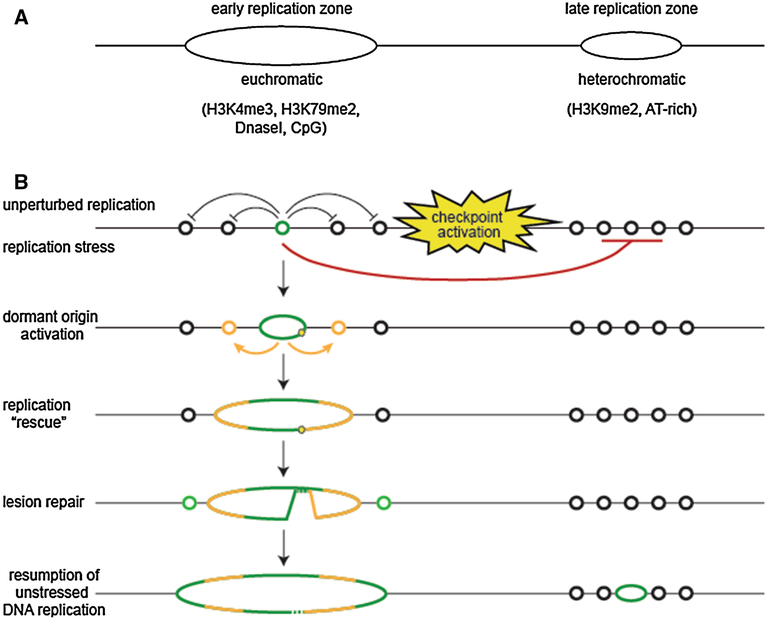Fig. 2.
Organization of DNA replication in metazoans. a Metazoan replication begins with origin firing in early replication zones, which are co-incident with actively transcribed euchromatic DNA and marks associated with active transcription. Late replicating zones, which associate with heterochromatic regions, also contain replication origins that fire later in S phase to complete synthesis in a timely manner. b Regulation of replication initiation in response to stress. In the absence of replication stress, replication initiates (green circle) from only one or a few widely spaced origins in early replication zones. Many origins do not fire (black circles, left). Late-replicating regions also contain origins (black circles, right), which fire later in S phase to complete replication in heterochromatic zones. In response to replication stress early in S phase, additional origins near the stress site (yellow star) also fire (orange circles), while origin firing in late-replicating DNA is suppressed. Origin firing near damage sites can help “rescue” stalled or collapsed replication forks by reinitiating replication on the opposite side of the lesion, completing replication within the damaged region (left). Suppression of late-firing origins may also suppress genome instability by preventing the initiation of replication in new genomic locations during potentially unfavorable conditions. Origins in distant regions will fire after the stress signal abates, following successful repair or adaptation after prolonged checkpoint activation

